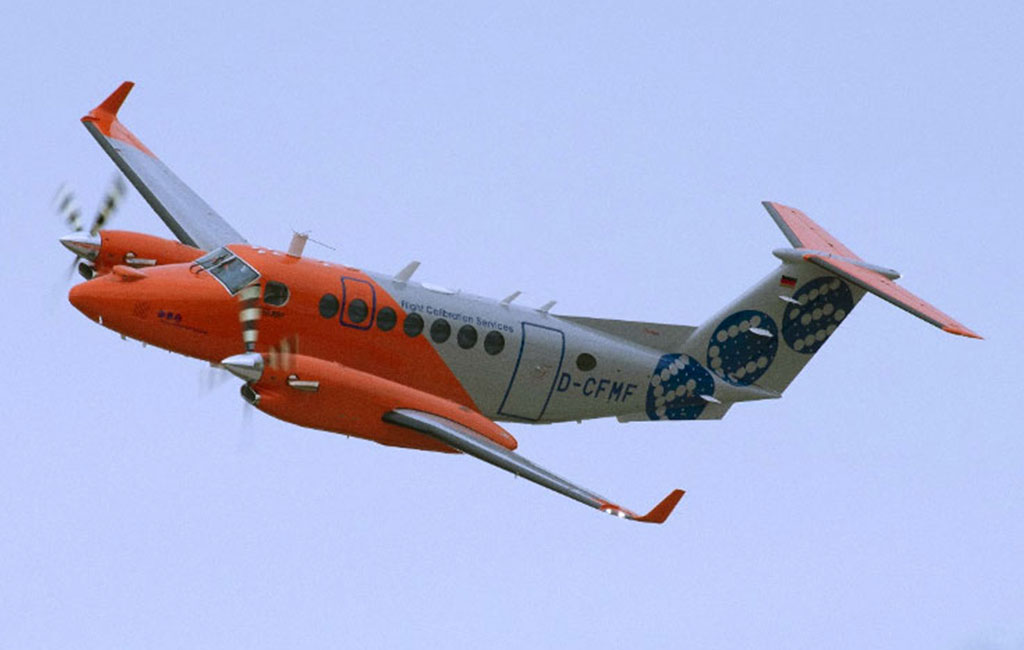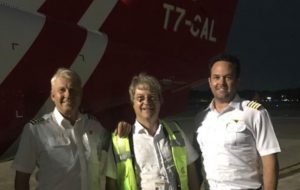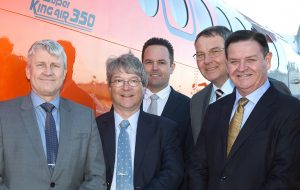In the course of a routine fleet renewal program, FCS Flight Calibration Services GmbH inducted its new flight inspection aircraft, D-CFMF into the fleet at the turn of 2019/2020. In order to maintain fleet commonality, the new aircraft is again a Textron Beechcraft KingAir B350, equipped with a state-of-the-art Automatic Flight Inspections System (AFIS) from Aerodata AG. Both aircraft and FIS feature a number of innovations, which translate into added benefit in terms of a more comprehensive calibration service for our customers. With this significant investment, FCS reconfirms its standing as one of the leading providers of Flight Inspection and Flight Validation services worldwide.

The capability to provide our calibration services with the utmost integrity and reliability is always at the core of FCS’ strategy. To that end, in order to cater for both normal wear and tear, and to capitalise on the latest technological advances, both in terms of aircraft and flight inspection system, FCS renews its fleet on a regular basis of approximately 12 years. January 15, 2020 marked the date when, after 13 years and 11.000 flight hours of sterling service, we exchanged our D-CFMD for the brand-new D-CFMF.
Within the aircraft itself, the most noticeable change lies within the cockpit avionics suite, with Textron Beechcraft introducing a cockpit architecture of the latest generation from Collins (formerly Rockwell Collins), the ProLine Fusion. The most prominent feature of this new cockpit are three large electronic displays, which, unlike their predecessors, are touch-sensitive, providing a more intuitive way of operating the various systems embedded within the cockpit architecture. Furthermore, and for the first time in a flight inspection aircraft, D-CFMF features FLARM, a traffic information and collision avoidance system for General Aviation. With these numerous new features, the cockpit crew have significantly enhanced situational awareness, a major contributing factor towards safe flight operation, especially in the challenging operational environments of FCS.
In terms of the Flight Inspection System (FIS), a major upgrade is even visible from outside the aircraft. For the first time a sophisticated camera system has been installed, featuring three high-resolution cameras integrated within a housing on the nose, augmented by an additional camera in the cockpit, to record the external view and relevant navigation and flight guidance indications. This new system will be used for checking various airport approach and ground lighting systems with all data synchronised to the FIS recording. Additionally it will enhance FCS’ capabilities in the field of Flight Validation, as relevant obstacle information is augmented with the camera presentation, significantly enhancing the crew’s capability to identify and verify critical obstacles. These new systems will be further developed as operational experience is gained, and will find their way in the comprehensive technical portfolio FCS is able to offer its customers.
Other significant changes are not easily recognizable from the outside and relate primarily to the software of the FIS, which has been subject to a comprehensive update by the manufacturer on the basis of a detailed specification from FCS. Providing the greatest benefit to our customers will be the newly introduced capacity to use various satellite systems as a basis for our sophisticated reference system, vital for providing the FIS with a valid, precise position solution with high availability. This, in the past, was limited to using the US NAVSTAR (“GPS”) system, with the upgraded FIS, data from the European GALILEO as well as the Russian GLONASS constellations can additionally be processed. By using all three different satellite constellations simultaneously dependency on a single system is substantially reduced, mitigating any potential limitations (such as interference, or poor satellite constellation) as occasionally experienced at times in the past..
A further significant enhancement of the FIS is in its capabilities for calibration of enroute navigational aids, notably DMEs, here up to 10 facilities can be measured simultaneously. This is especially significant during flight validation of new Instrument Procedures where the backup to satellite navigation is often provided by DMEs (DME/DME). During the commissioning flight validation of new procedures, the availability of this back-up solution is to be verified over the complete track of the procedure. With its new capabilities, up to 10 DMEs can now be assessed at any given time, avoiding the requirement to fly a given procedure multiple times in order to verify the required signal coverage – to the benefit of both our customers as well as the environment.
A further enhancement of the new FIS is an upgrade to monitor the SSR 1030/1090MHz frequency band, anticipating upcoming surveillance requirements in the increasingly important area of frequency protection and management.
With this significant investment in both the calibration aircraft and the FIS, FCS underscores its strategy as a leading provider of flight inspection and flight validation services. For our customers this approach translates into high availability and reliability of the most modern technology, developed to take advantage of the latest technological advancements and meet demanding regulatory requirements.







